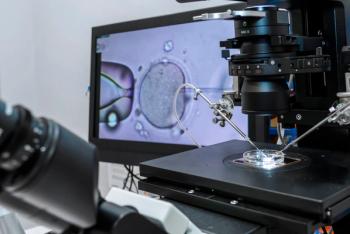
Impact of endometrial thickness and abnormal uterine bleeding on endometrial cancer
A prospective observational study has assessed the clinical relevance of endometrial thickness and abnormal uterine bleeding to endometrial cancer risk in a cohort of postmenopausal patients undergoing diagnostic hysteroscopy and endometrial biopsy.
The
However, patients with endometrial thickness ≥ 4 mm had a significantly higher prevalence of endometrial cancer compared to those with endometrial thickness < 4 mm.
In addition, the Italian investigators discovered an “alarmingly high prevalence” of endometrial cancer in symptomatic patients with endometrial thickness < 4 mm: 8.5%.
This finding indicates that the value of endometrial thickness in patients with abnormal uterine bleeding likely needs further exploration, or it should be combined with other risk factors in a new diagnostic score for endometrial cancer.
The study in the journal Diagnostics comprised 435 postmenopausal women referred to the Obstetrics and Gynecological Clinic of Padua in Italy for diagnostic hysteroscopy between June 2017 and June 2019.
Of them, 329 were asymptomatic and referred to diagnostic hysteroscopy because of endometrial thickness ≥ 4 mm (ET Group). The remaining 106 patients were referred for diagnostic hysteroscopy because of abnormal uterine bleeding (AUB Group).
The AUB Group was further divided into two subgroups: women with endometrial thickness < 4 mm (n = 48) (AUB Subgroup 1)and those with endometrial thickness ≥ 4 mm (n = 58) (AUB Subgroup 2).
After hysteroscopy, an endometrial biopsy was obtained for each patient. However, after histological examination, four patients (three patients from the ETGroup and one patient from the AUB Group) were excluded, due to insufficient specimens, leaving 431 patients for statistical analysis.
Prevalence of endometrial cancer and atypical hyperplasia in the AUBGroup and the ETGroup was 21% and 6.7%, respectively.
A much higher likelihood of both conditions was also observed in the AUB Subgroup 2 (29.3%) compared to the AUBSubgroup 1 (10.6%) (P < 0.001).
The incidental finding of endometrial thickness ≥ 4 mm was the main indication for diagnostic hysteroscopy among the entire study population (75.6%), with only a small prevalence of endometrial cancer (3.68%) and atypical hyperplasia (3.07%), as opposed to a high percentage of negative biopsy (93.25%).
The authors noted the lack of consensus as to the best endometrial “warning cut-off” to use for selection of patients with abnormal uterine bleeding who require endometrial biopsy. But among symptomatic patients, the cut-off that showed the best sensitivity and specificity for endometrial cancer diagnosis was 11 mm: 100% and 80%, respectively.
“Considering the high risk of neoplasia, diagnostic hysteroscopy with endometrial biopsy should be mandatory in cases of abnormal uterine bleeding in postmenopausal patients,” the authors wrote, adding “the need for further evidence stating the clinical relevance of endometrial thickness value in asymptomatic patients and the impact of individual risk factors on endometrial cancer development.”
Based on their own experience, the investigators question the safety of endometrial thickness in excluding cancer in patients with AUB, which raises the reasonable assumption that diagnostic hysteroscopy with endometrial biopsy might be performed in this group of patients.
Reference
- Saccardi C, Vitagliano A, Marchetti M, et al. Endometrial Cancer Risk Prediction According to Indication of Diagnostic Hysteroscopy in Post-Menopausal Women. Diagnostics (Basel). 2020;10(5):257. Published 2020 Apr 27. doi:10.3390/diagnostics10050257
Newsletter
Get the latest clinical updates, case studies, and expert commentary in obstetric and gynecologic care. Sign up now to stay informed.
















